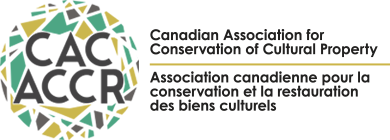J.CAC VOLUME 45 (2020)
A Survey of the Use of Cambridge White by Canadian Artists
Previous research at the Canadian Conservation Institute (CCI) has demonstrated that Tom Thomson and artists from the Group of Seven made extensive use of a white pigment that consists of a mixture of lead sulfate (PbSO4) and zinc white (ZnO) combined in specific proportions: Cambridge Colours’ New Flake White or Cambridge white. Evidence of the use of Cambridge white by Canadian artist Kathleen Munn and archival research raised the question of its possible use by other Canadian artists. Therefore, a survey of the use of the pigment was undertaken on site at the National Gallery of Canada (NGC) that focussed on paintings executed during the period from 1894, when Madderton & Co. first produced the paint, to 1943, the year the company was dissolved. The paintings surveyed were analyzed using two non-destructive techniques, namely, hand-held X-ray fluorescence (XRF) spectrometry and Fourier transform infrared (FTIR) spectroscopy in external reflection mode with a portable instrument. This article presents the results of the survey as well as a compilation of results obtained for other Canadian paintings dated to the period of interest which had been analyzed previously at the CCI. Through the evaluation of results obtained for 88 paintings by Tom Thomson and the Group of Seven and 128 painting by other Canadian artists, it is clear that Tom Thomson and the Group of Seven remain the main users of Cambridge white identified so far. Although a relatively small number of other Canadian artists were surveyed in this study, results indicate that Cambridge white was used mainly in the Toronto area, where the paint was sold, and that most artists who used it were close to the Group of Seven.
Download: JCAC45 Corbeil et al.